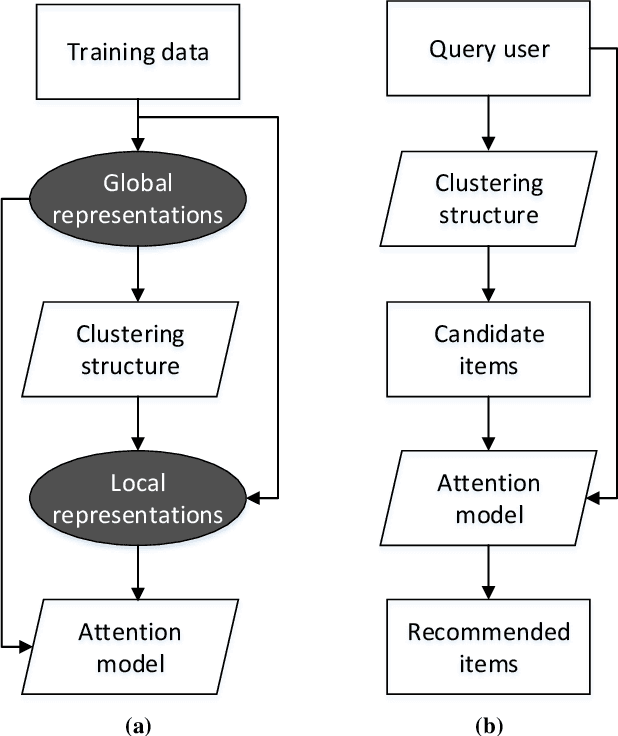Wen-Chieh Fang
Attention on Global-Local Embedding Spaces in Recommender Systems
Apr 25, 2021



Abstract:In this study, we present a novel clustering-based collaborative filtering (CF) method for recommender systems. Clustering-based CF methods can effectively deal with data sparsity and scalability problems. However, most of them are applied to a single embedding space, which might not characterize complex user-item interactions well. We argue that user-item interactions should be observed from multiple views and characterized in an adaptive way. To address this issue, we leveraged the relation between global space and local clusters to construct multiple embedding spaces by learning variant training datasets and loss functions. An attention model was then built to provide a dynamic blended representation according to the relative importance of the embedding spaces for each user-item pair, forming a flexible measure to characterize variant user-item interactions. Substantial experiments were performed and evaluated on four popular benchmark datasets. The results show that the proposed method is effective and competitive compared to several CF methods where only one embedding space is considered.
Cognitive Discriminative Mappings for Rapid Learning
Nov 08, 2016



Abstract:Humans can learn concepts or recognize items from just a handful of examples, while machines require many more samples to perform the same task. In this paper, we build a computational model to investigate the possibility of this kind of rapid learning. The proposed method aims to improve the learning task of input from sensory memory by leveraging the information retrieved from long-term memory. We present a simple and intuitive technique called cognitive discriminative mappings (CDM) to explore the cognitive problem. First, CDM separates and clusters the data instances retrieved from long-term memory into distinct classes with a discrimination method in working memory when a sensory input triggers the algorithm. CDM then maps each sensory data instance to be as close as possible to the median point of the data group with the same class. The experimental results demonstrate that the CDM approach is effective for learning the discriminative features of supervised classifications with few training sensory input instances.
 Add to Chrome
Add to Chrome Add to Firefox
Add to Firefox Add to Edge
Add to Edge